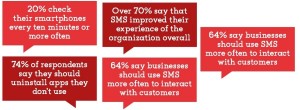— August 1, 2017

StartupStockPhotos / Pixabay
A few years ago, I found myself in dire need of some formal C level management skills. I started a company in 2007 that quickly grew into a good sized start up service with around 100 employees. It was a wild ride that included all of the things you hear about; blood, sweat, tears and co-founder drama.
Somewhere after the blood and sweat part, my co-founders and I started to focus on steering the ship ahead in a fluid motion, closing more revenue year over year, and growing ourselves and our team’s talent. Less ‘hiring frenzy’, more ‘making teams more effective’.
If you’ve ever had to do this with no experience. You feel my pain.
Serial entrepreneurs don’t always make the best C level executives. As much as they might want to be, it’s almost critical that they admit their inability and back out of the way of those who have executive experience and have studied strategic planning. It wasn’t until I did this, that the services business grew like clockwork month over month.
Why So Many C Level Executives Aren’t Qualified
In San Francisco, and I believe the tech industry as a whole, it’s commonplace to have a CEO who is also a founder or co-founder. Many times C level executives are the visionary who thought up the idea for the company.
This leaves a vacuum of experience at the top level of management in the company, and when it grows, often times it’s without experience or trained executives. This is what causes a lot of the wild news in Silicon Valley. You hear about investment being wasted away, or founders getting screwed, and a lot of it is because of the lack of experience and maturity in the company leadership.
I’ve also noticed something that’s even worse than inexperienced, not being willing to admit it.
If a founder with no C level experience is going to grow into a great C suite execute, then he’s got to man (or woman) up, and go learn the skills necessary.
It’s About Time Everyone Started Admitting It
Especially in startups, where pockets may not be lined with money, the margin for error is low. Too many mistakes can shut down the company, and pride can ignite that process easily. Often times you see great business plans, but the execution is muddled by something external.
How many great businesses would exist if strategy were executed?
Where would your business be if every strategy was executed as you envision it should be?
The Multi-Faceted Ideals Behind Making A Strategy Work
For me, strategic planning was the biggest challenge as an executive. The SWOT method and mind maps meant nothing to me. So I started reading about them and learned very quickly just how little I knew about strategic planning and execution. As I pulled back the layers of strategic thinking and how to execute it, I began to realize there was a theme.
Working as a group to execute an idea has many different aspects to it. Mental, physical, creative and programmatic.
This means, someone’s got to be good at organizing things, someone’s got to motivate and someone’s got to problem solve, all at the same time. And we’ve probably all got people on our team that have those skills, but how do we get them together, all rowing in the same direction? That’s the magic.
I got some advice from my friend Vasiliy Ivanov, who has a team of over 100 people who work on products in the tech industry. He’s a great example of a technical founder turned C level executive. One of his products was built around this specific problem, Roadmap Planner.
From a different perspective he talks about the idea behind strategic planning and how it’s complexity can be deconstructed.
“If you think about where strategic planning goes wrong, start with checking your end goal and work backwards. Make sure everything can actually be accomplished and can be controlled. The biggest failure point for strategic planning happen typically because of bad performance monitoring.
If the goals are vague, your colleagues will treat them with vague focus. It’s as simple as this: high-level objectives should precede each achievement and tie to a date in the future. This will form phases of the projects and will outline the project itself.
Execution is the hardest part. All contributing members need to see the vision frequently, and communicating that on paper is difficult. Scrum meetings, gantt charts and KPIs all must be easily understood and agreed upon by team members.
Working style, location and even skill sets might change during the project. Project contributor roles must be agile enough to interchange at any moment.
We want creativity and progress to come to the project wherever it happens for the team members, at home, in the shower, at the office. The ecosystem for the project must be easily accessed in any of these environments.
10 Hours Solid at a Desk – No One Works Like That Anymore!
I heard the founder of Evernote talk about how designing the iWatch app changed the way the group thinks about productivity, and how difficult it was to start thinking in terms of what people would use their app for on a tiny watch. What he explained is that there’s a new cadence to the flow of people’s work today. It’s rare that someone would sit at a desk and focus on one thing for 10 or 12 hours a day anymore.
Today, people work for a few minutes on something, stop, get the person next to them to give feedback, go back to working, stop again, get more feedback, etc. It’s a “stop, go, stop” working style. This cycle repeats itself over and over. We work in such a collaborative way, and we don’t treat our strategy execution in the same way. Why?”
In many cases, tech teaches people a new method or style, and there hasn’t been much innovation in this [strategic planning] space, at least not for start ups or smaller groups. Tools should mirror this working style.
But let’s take it one step at a time. Admitting we need help is a big step in the right direction, and hopefully this will help others reach out for strategic help and more startups will succeed because of it.
Business & Finance Articles on Business 2 Community
(57)
Report Post








